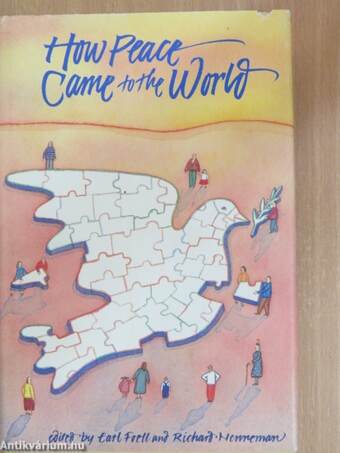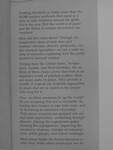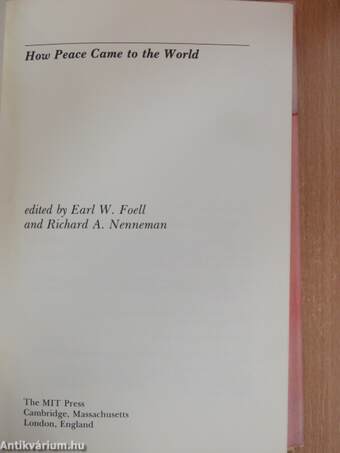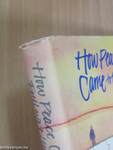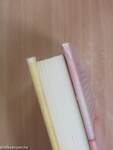1.062.087
kiadvánnyal nyújtjuk Magyarország legnagyobb antikvár könyv-kínálatát

VISSZA
A TETEJÉRE
JAVASLATOKÉszre-
vételek
How Peace Came to the World
| Kiadó: | The MIT Press |
|---|---|
| Kiadás helye: | Cambridge |
| Kiadás éve: | |
| Kötés típusa: | Vászon |
| Oldalszám: | 257 oldal |
| Sorozatcím: | |
| Kötetszám: | |
| Nyelv: | Angol |
| Méret: | 21 cm x 15 cm |
| ISBN: | 0-262-06100-7 |
naponta értesítjük a beérkező friss
kiadványokról
naponta értesítjük a beérkező friss
kiadványokról
Fülszöveg
Nothing threatens us today more than the 50,000 nuclear warheads that stand in a state of near readiness around the globe. Yet in the year 2010 the world is at peace and the threat of nuclear devastation has vanished.
How did this come about? Through the imaginative ideas of forty men and women—lawyers, doctors, professors, con-flict research specialists—we see a wide va-riety of scenarios explaining how the world leamed to prevent warfare.
Writing from the United States, Switzer-land, Austria, and West Germany, the au-thors of these essays prove that even in an imperfect world of practical politics, there are many paths to peace. They provide a wealth of originál yet workable approaches to peace that are as varied as the people who long for it.
How can these amateurs fix up the world? By not accepting that war is inevitable, by forcing their leaders to take bold steps, and by becoming an informed citizenship. Their peace scenarios are grouped into several main... Tovább
Fülszöveg
Nothing threatens us today more than the 50,000 nuclear warheads that stand in a state of near readiness around the globe. Yet in the year 2010 the world is at peace and the threat of nuclear devastation has vanished.
How did this come about? Through the imaginative ideas of forty men and women—lawyers, doctors, professors, con-flict research specialists—we see a wide va-riety of scenarios explaining how the world leamed to prevent warfare.
Writing from the United States, Switzer-land, Austria, and West Germany, the au-thors of these essays prove that even in an imperfect world of practical politics, there are many paths to peace. They provide a wealth of originál yet workable approaches to peace that are as varied as the people who long for it.
How can these amateurs fix up the world? By not accepting that war is inevitable, by forcing their leaders to take bold steps, and by becoming an informed citizenship. Their peace scenarios are grouped into several main approaches—awakening through disaster, piaying the superpower game, flanking the superpowers, improving the machinery of peace, changes of conscious-ness, action groups, and citizen exchanges.
Most essays tackle the Soviet-American ri-valry first, while others emphasize acts by
About this book
The essays in this book were chosen from entries to "Peace 2010/' a contest sponsored by The Ghristian Science Monitor. There is a foreword by Kurt Waldheim, former Secretary-General of the United Nations. Earl W. Foell, the Editor in Chief of the Monitor, and Richárd A. Nenneman, the Monitor's Managing Editor, have written introductions to each thematic chapter. In a concluding note Lincoln Bloomfield, MIT professor and former national security council official, analyzes the essays and compares them to the work of peace professionals.
"How Peace Came to the World is an arresting and evocative compendium of scenarios that imagine a sustainable future for our planet. Forty men and women wrestled with the specifics of how thé threat of nuclear war could be removed. Almost all of them agreed on a central point: that Americans and Soviets must accommodate themselves to each other. They will either coexist or not exist. The book is a superb reminder that people everywhere owe a duty to the children to safeguard the future."
International Physicians for the Prevention of Nuclear War, winners of the 1985 Nobel Peace Prize
"This is a timely and significant book. There is no more important sub-ject than the achievement of peace in the world. I commend it for generál reading, particularly in an age where without peace our survival is in question, and I am reminded of Popé Paul VTs eloquent statement during his 1965 speech to the United Nations: 'War, never again; never again war/"
Arthur Goldberg
Former Assocíate Justice of the Supreme Court of the United States
"The essays collected in this Volume are sound ideas of what all nations of the world must do tó make our planet safer for ourselves and for future generations."
Ronald Reagan
BBsfiii ű Vissza



